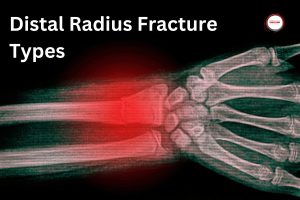
Fractures, particularly those involving the scaphoid bone in the wrist, are often challenging to diagnose and treat. This article delves into the intricacies of scaphoid fractures, one of the most common types of fracture in the hand and wrist accounting for 2-7% of all fracture types (1). We will discuss insights into their diagnosis, treatment, and long-term management.
Article Outline
- What is a Scaphoid Fracture?
- How to Recognise Symptoms of a Scaphoid Fracture?
- Why is the Scaphoid Bone Prone to Fractures?
- Diagnostic Procedures for Suspected Scaphoid Fractures
- The Role of X-Ray and MRI in Diagnosing Scaphoid Fractures
- Understanding the Different Types of Scaphoid Fractures
- Treatment Options for Scaphoid Fractures
- Surgical Treatment for Scaphoid Fractures: When is it Necessary?
- Challenges in Healing: Blood Supply and Avascular Necrosis
- Preventing Scaphoid Fractures: Tips and Strategies
What is a Scaphoid Fracture?
A scaphoid fracture is a break in the small scaphoid bone, one of the carpal bones in the wrist. It’s often caused by a fall onto an outstretched hand, leading to pain and swelling on the thumb side of the wrist. Understanding the anatomy of the scaphoid, including its location and function, is crucial in treating these sometimes complex fractures.
How to Recognise Symptoms of an Acute Scaphoid Fracture?
Symptoms typically include wrist pain, tenderness in the anatomic snuffbox, and swelling. However, these symptoms can be misleading, as they are similar to those of a simple wrist sprain. This overlap often leads to misdiagnosis or delayed treatment.
Why is the Scaphoid Bone Prone to Fractures?
The scaphoid bone has a unique shape and position within the wrist joint, making it susceptible to fractures. The bone is narrowed in the centre and it’s this scaphoid waist that is prone to fracture. Its role in wrist movement and its specific blood supply add to the risk of injury and complications in healing, often leading to scaphoid non-union. The proximal part of the bone (closest to the wrist) depends on blood supply from the distal part. So in a fracture of the proximal part the blood supply through the bone is disrupted, making the healing of the proximal pole more likely to cause problems.
Diagnostic Procedures for Suspected Scaphoid Fractures
Initial diagnosis often involves a physical examination and imaging tests. Clinicians may perform specific manoeuvres to elicit tenderness over the scaphoid tubercle, an indicator of a possible fracture. We tend to use a triad of anatomical snuff box tenderness, scaphoid tubercle tenderness and pain on compression of the thumb onto the scaphoid.
The Role of X-Ray and MRI in Diagnosing Scaphoid Fractures
While X-rays are the first line of imaging, they may not always detect a fresh fracture. In such cases, an MRI, CT scan or a repeat X-ray after some time can be more revealing, especially for occult scaphoid fractures. There is also bone scintigraphy, which is expensive but offers a highly sensitive secondary diagnostic option.
Understanding the Different Types of Scaphoid Fractures
There are several methods of classification of scaphoid fractures. Scaphoid fractures can vary from simple, non-displaced fractures to complex patterns involving the proximal pole or the waist of the scaphoid. Each type has different implications for treatment and healing. The MAYO classifications describe these different types of scaphoid fractures:
- Distal Tubercle
- Distal Intra-articular Surface
- Distal Pole (Third)
- Waist
- Proximal Pole

Treatment Options for Scaphoid Fractures
Treatment ranges from conservative methods, like casting, to more aggressive approaches like surgery. The choice of treatment for scaphoid fracture depends on the fracture type, location, and patient-specific factors.
Read our guide to hand therapy and therapists.
Surgical Treatment for Scaphoid Fractures: When is it Necessary?
Surgery may be required if the fracture is displaced or those not responding to conservative treatment. It involves realigning the fractured bone pieces and stabilising them, often with screws or pins.
Challenges in Healing: Blood Supply and Avascular Necrosis
As discussed above, the unique blood supply to the scaphoid makes it prone to complications like avascular necrosis, especially in fractures involving the proximal pole. Understanding the blood flow and its role in fracture healing is vital for effective treatment. While these types of complications are relatively rare, your clinician will constantly be on the look-out for these problems during your check-ups. Scaphoid non-union remains a tricky problem which is difficult to treat.
Our close links to many of the best Hand and Wrist Specialist Consultants in London, mean that if complications are suspected we can get you seen quickly by the most appropriate person for your fracture type.
Preventing Scaphoid Fractures: Tips and Strategies
Prevention strategies focus on reducing the risk of falls and protecting the wrist during high-risk activities. Wrist guards in sports and ergonomic adjustments in daily activities can significantly lower the chances of sustaining a scaphoid fracture. Your therapist may also look at teaching you how to fall safely. A skill which can be learned.
Conclusion
- Scaphoid fractures are common wrist injuries, often resulting from falls.
- Symptoms can mimic a wrist sprain, leading to potential misdiagnosis.
- Accurate diagnosis often requires advanced imaging techniques.
- Treatment varies from casting to surgery, depending on the fracture’s severity and location.
- Blood supply to the scaphoid bone is a critical factor in healing, with poor supply leading to complications like avascular necrosis.
- Prevention of scaphoid fractures involves protective measures in high-risk activities.
Scaphoid fractures, despite their common occurrence, require careful attention due to their potential for complications and impact on wrist function. Early and accurate diagnosis, appropriate treatment, and preventive measures are key to managing these fractures effectively.
Find out more about how our specialist hand therapy service can help you achieve the best possible treatment outcome for your hand, wrist or forearm condition.
You can book an appointment if you’d like to see one of our Advanced Hand Specialist Physiotherapists or contact us to discuss your needs.




Comments